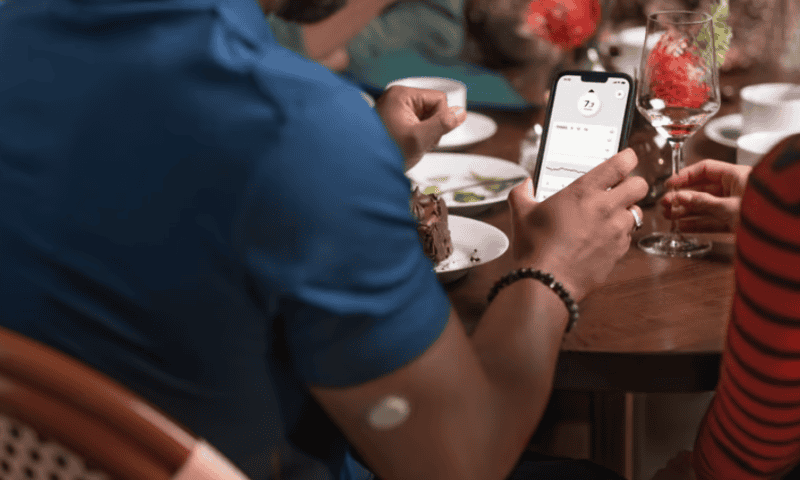Much of the recent conversation around continuous glucose monitors has focused on expanding the technology beyond the traditional user pool, which has long centered on people with Type 1 diabetes.
New research Dexcom presented at the European Association for the Study of Diabetes’ (EASD’s) annual meeting in Germany this week prove that its devices are adapting well to that evolution.
“The data that our team put together along with our researchers in clinical trials continues to show just how beneficial CGM is,” Jake Leach, the devicemaker’s chief operating officer, said in an interview with Fierce Medtech. “As I walk around this conference, there’s so much now dedicated to glucose monitoring, and it wasn’t like that years ago. So, when I think about the future of CGM, I think it’s only going to continue to grow in its access and use around the globe and in broad populations.”
One of the company’s studies, for example, recruited insulin users in the U.K. to test out the Dexcom ONE device, which offers a more simplified interface compared to the company’s flagship G-series sensors. Though both Type 1 and Type 2 patients joined the study, Dexcom specifically singled out its results in the Type 2 population: The group saw their average HbA1c levels drop from a baseline of just over 10% to 8.5% after three months, then down to 8.3% after another three months, according to a company release.
The data marked the first real-world study conducted on the Dexcom ONE CGM, Leach said.
With those promising results backing the device, he said, “We’re going to continue to work on access both in the U.K. and around the globe to get anybody who has diabetes access to CGM. The next big step is—in the U.S., we have coverage for anybody who takes insulin, and there’s a large basal population in the U.K. as well, folks that don’t yet have access to CGM, and that’s something we want to change.”
Abbott, meanwhile, touted the benefits of its own CGM technology in the Type 2 population: After using its FreeStyle Libre devices for two years, participants in a Swedish study experienced HbA1c drops of more than 0.3% whether they were on a basal-only insulin regimen or multiple daily injections, and with or without help from glucose-lowering drugs, according to results shared at the EASD meeting.
Another study Dexcom presented at the EASD conference this week verified the use of the G7 sensor in pregnant women with Type 1, Type 2 or gestational diabetes—making Dexcom’s G6 and G7 devices the only commercially available CGMs backed by clinical data for use during pregnancy, the company said.
Across that entire group, the sensor achieved high accuracy in measuring glucose levels, racking up a 92.5% in terms of its %20/20 agreement rate, a measure of CGM accuracy that requires readings to be within 1.1 mmol/L for glucose levels below 4.4 mmol/L and within 20% for levels above that point.
That’s about on par with the device’s performance in people with diabetes who aren’t pregnant, according to Leach, who noted, “G7 was the first [integrated CGM] to be cleared in the U.S. for pregnancy, and this is just to help back up the power that the product can have for those mothers whose pregnancies are complicated by diabetes.”
That group makes up about 10% of all pregnancies, he said, and “whether you’re on insulin therapy or not, just the benefit of having a CGM there to help guide you throughout the pregnancy—it’s critical.”
The third of Dexcom’s studies shared at EASD focused on the traditional Type 1 diabetes population but did so over the course of seven years—making it the “longest prospective real-world CGM study ever conducted,” according to the company.
The study linked long-term CGM use to sustained improvements in glucose levels—bringing them down to an average of 7.1% when a Dexcom sensor was used alongside multiple daily injections, compared to 7.7% for those who self-monitored their blood glucose. Those numbers further increased when users connected their CGMs to an automated insulin delivery system—in this case, in combination with Tandem Diabetes Care’s Control-IQ technology—with an average HbA1c of 6.6% among that group.
Leach also touted “really powerful” outcomes that researchers observed beyond HbA1c drops.
For one, “folks that were on fingersticks for that seven-year period had a threefold increase in their diabetic retinopathy … whereas in the CGM groups, it remained stable; there wasn’t an increase,” he said, adding that Dexcom will soon be putting out additional data from the study showing CGM use’s impact on kidney disease and other chronic complications of diabetes.
Beyond improved health outcomes, the research also showed remarkably high adherence rates among Dexcom users, which grew even further when an AID system was added to the mix: from just under 89% for those combining the CGM with multiple daily injections to nearly 92% for those who integrated their devices into what’s known as a hybrid closed-loop system—“which is really a testament to how powerful the tool is for them,” Leach said.
Supported by those findings, Dexcom said in the release that it now plans to make the G7 sensor available for use with Tandem’s t:slim X2 insulin pump in the U.S. and “multiple markets across Europe and Asia-Pacific” before the end of 2023.

